 Loading... Please wait...
Loading... Please wait...Bookstore Blog
A Shared History: The Orthodox Church's Byzantine Heritage
Posted by Staff on 14th Jul 2016
Just over one year ago, teachers and students from Holy Trinity Orthodox Seminary embarked on a very special trip away from the confines of the classroom. Although the various airline tickets were marked "Istanbul, Turkey", the intrepid travelers actually went on a journey to Constantinople, New Rome, heart of the Eastern Roman, or Byzantine, Empire. Aptly named the "Byzantine Heritage Tour", the trip-cum-pilgrimage was undertaken by the teacher and students of HTS's revived Byzantine History course, taught by Fr. Dcn. Andrei Psarev, who succinctly explains the importance and relevance of studying Byzantine History: "we study Byzantine imperial history because without it we cannot understand the history of the Church that brought Christianity to Rus."
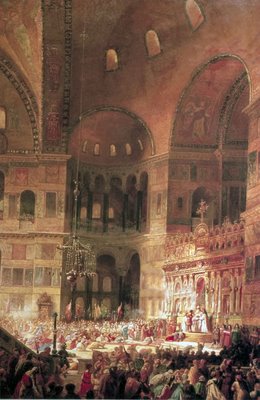
Although the City has long fallen, and the Empire no longer stands guard over those lands, the unique culture that developed the milieu of the Roman East is still prevalent wherever an Orthodox Christian may find himself. Byzantine (more traditionally "Roman" after Romiosini/Ρωμηοσύνη) culture is a blend of classical Hellenistic and Roman cultures, and Hebrew and Syriac influences from the East. Amidst this melting pot spread the Orthodox Christian faith, which became incarnate in the prevailing culture.
We are constantly reminded of our Byzantine heritage when we worship: our Divine Liturgy and the services of the liturgical cycle, as celebrated in the vast majority of Orthodox monasteries, cathedrals and parishes, are according to the rites that developed in this culture; our prayers are, for the most part, written by the saints who were glorified amidst this culture; our vestments reflect the majesty of the imperial court which ruled this culture; our iconography is the art form perfected in this culture; our liturgical chant (with notable exceptions) is that which echoed throughout the hallowed temples of this culture; our church architecture is based on, or derives from, the magnificent monuments built by this culture; our theology is articulated in the philosophical language of this culture.

Constantinople itself stood as an icon of this culture, so imbued with the spirit of the Christian faith, where all things, whether they be architecture, art, literature, or music, where all offered to, and influenced by, the worship of the All-Holy Trinity and the Incarnate God-Man, the Lord Jesus Christ. The Great Church of the Divine Wisdom is the apex of this and still stands today as a witness to the glory that was Constantinople.
The intellectual climate of the Empire was one in which classical Hellenistic philosophy met with Christian theology, producing some of the greatest minds in the Church. The Church Fathers, such as Saint Athanasios the Great, the Three Holy Hierarchs, Saint Basil the Great, Saint Gregory the Theologian, and Saint John Chrysostom, Saint Kyrill of Alexandria, Saint Maximos the Confessor, Saint Photios the Great and Saint Gregory Palamas, all fused the very best of Hellenistic philosophy with the divinely-revealed truths of the Christian faith. To this day, the writings of these Fathers form the very core of Orthodox theological literature.
![]()
The theology of the Church is given voice by its hymnography, and brought to life in its iconography. These art forms were developed and perfected by saints living in the monasteries of Byzantium. Most notably, the lyrical Saints, Romanos the Melodist, John of Damascus, Andrew of Crete, and Joseph, Cosmas and Kassiani the Hymnographers, who composed large portions of our church services. The art of iconography, a tradition passed down from the Holy Apostle Luke, was brought to great spiritual heights through the efforts of iconographers such as Saint Lazaros of Constantinople, who defended the tradition during the iconoclast period, and was passed on to the Russian church, which in turn produced the revered iconographers, Saints Alypy of the Kiev Caves and Andrei Rublev. Despite the traditional art form falling out of favour in later centuries, due to the influence of Western artistic styles, Byzantine iconography made a return to prominence in the 20th century through the work of revered icongraphers such as Photios Kontoglou in Greece and Jordanville's own Archimandrite Cyprian.
The evidence of Byzantine art and architecture spans the breadth of the Roman Empire's cultural influence, and remains its most visible presence. Wherever the Orthodox Christian faith spread, with it went the inheritance of Christian Rome. Whether you find yourself in Mount Athos, Greece, Cyprus, or the Holy Land, the heartlands of traditional Byzantine architecture, the furthest reaches of the Empire, such as Italy and France, or the nations evangelised by the Byzantine saints, such as Bulgaria, Serbia, Romania and Rus, you will find the ubiquitous presence of Byzantine-style churches, mosaics and icons. These are not only the ancient churches from the imperial period, but also newer churches built according to the Neo-Byzantine architectural style:
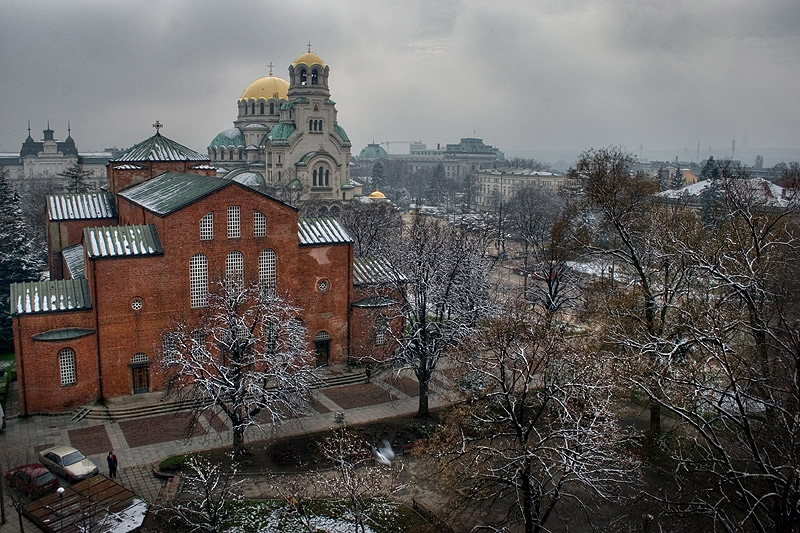
Sofia, Bulgaria: A glimpse of ancient and neo-Byzantine architecture side by side. Hagia Sofia Cathedral (4th c.) and Saint Alexander Nevsky Sobor (19th c.)
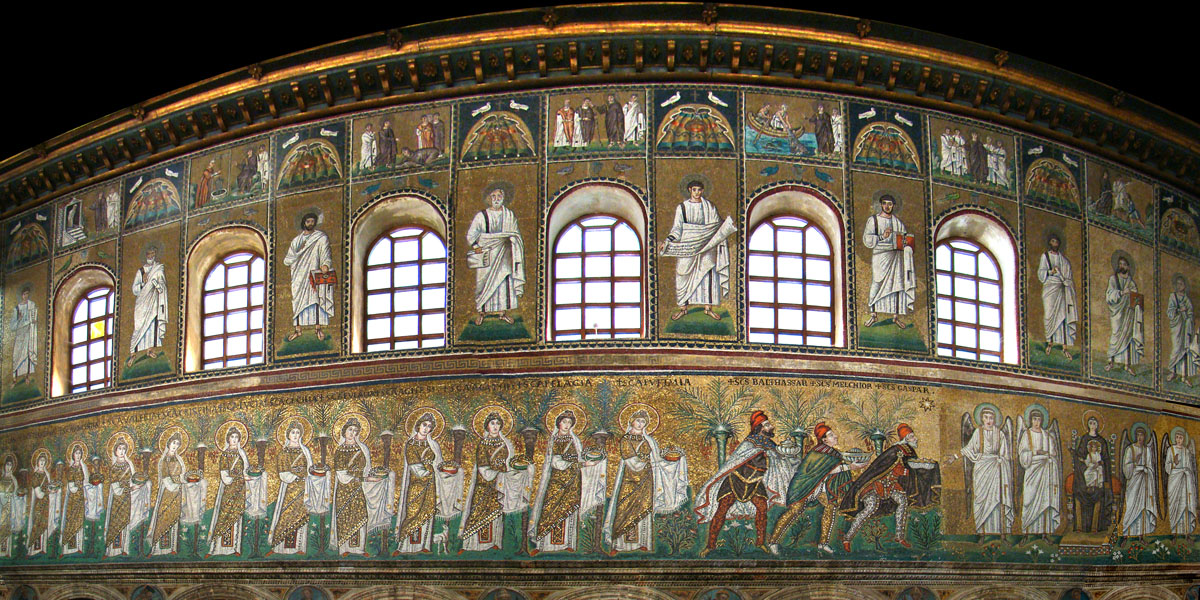
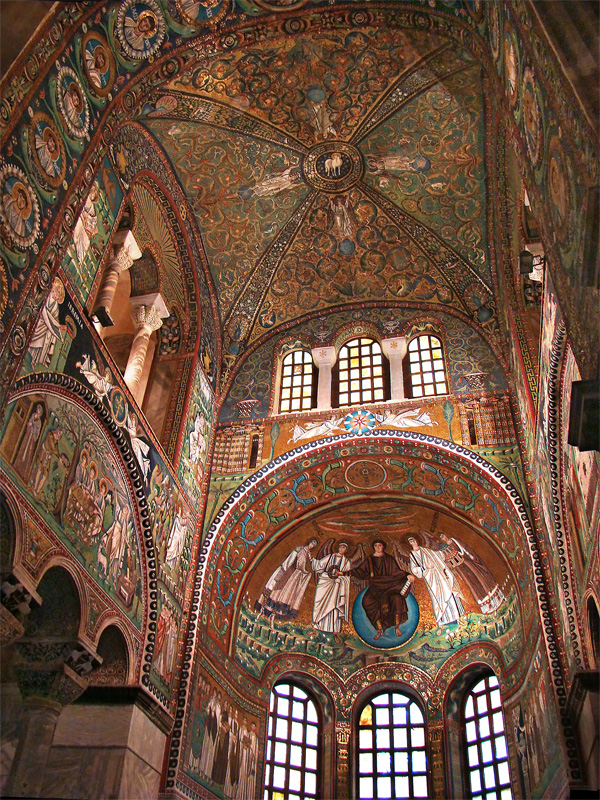
The famous mosaics of Ravenna, Italy.
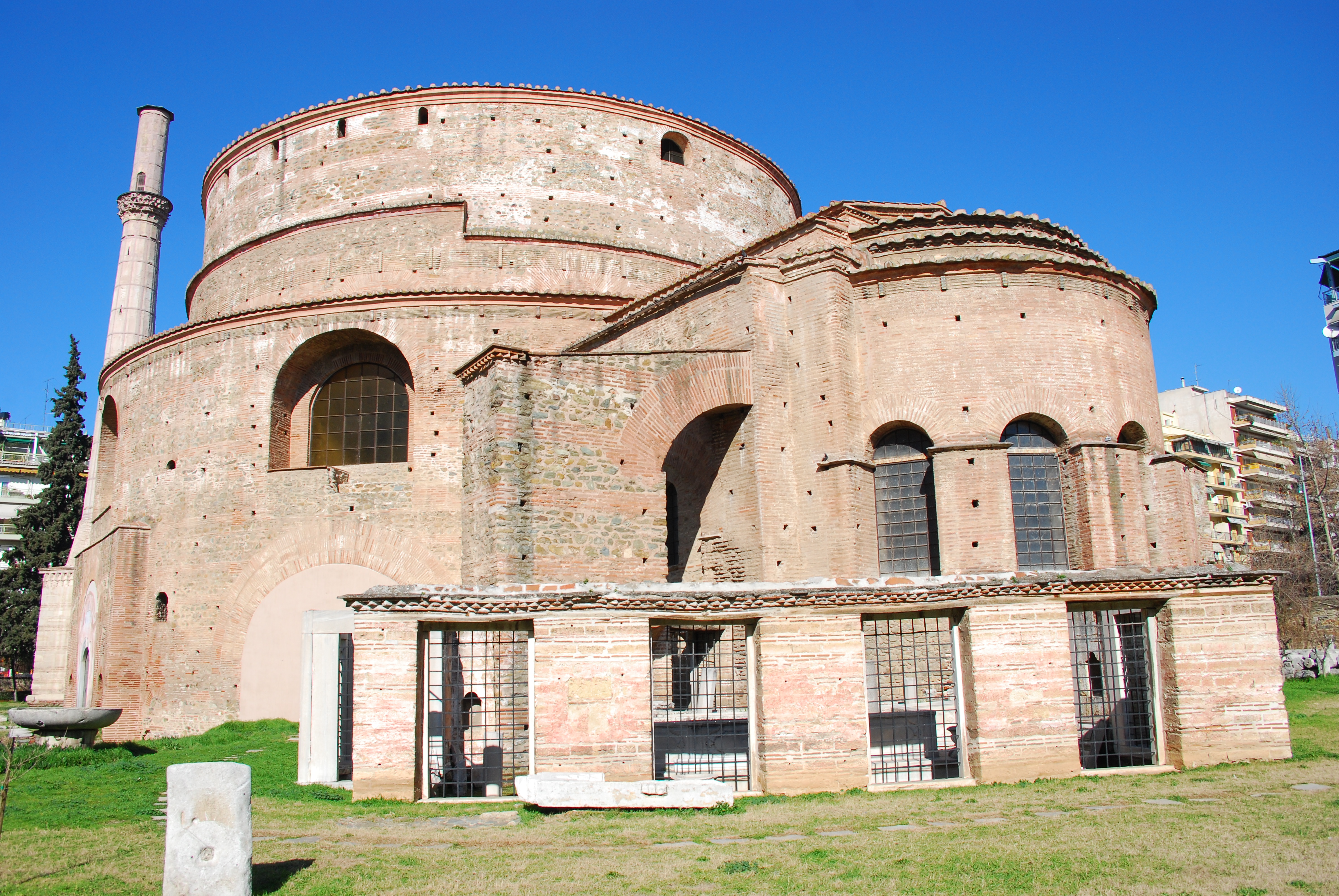
Greece's oldest church: The Rotonda of Saint George in Thessaloniki, once again used as a church.

Byzantium lives on: The Katholikon at Karyes on Mount Athos, the living centre of the Byzantine tradition.

Byzantine heritage of Serbia: the oldest church in Serbia, dedicated to Saint Peter.
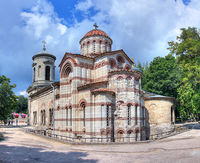
When Rome was in Rus: the 8th century church of Saint John the Baptist in Kerch, Crimea.
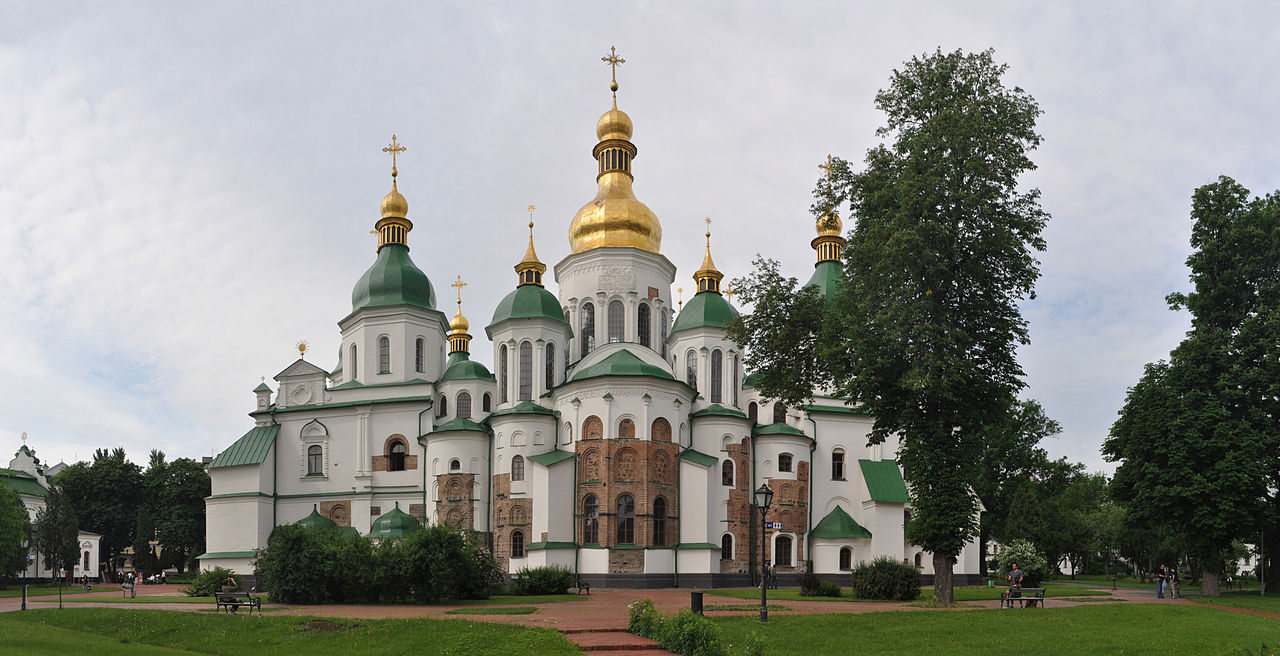

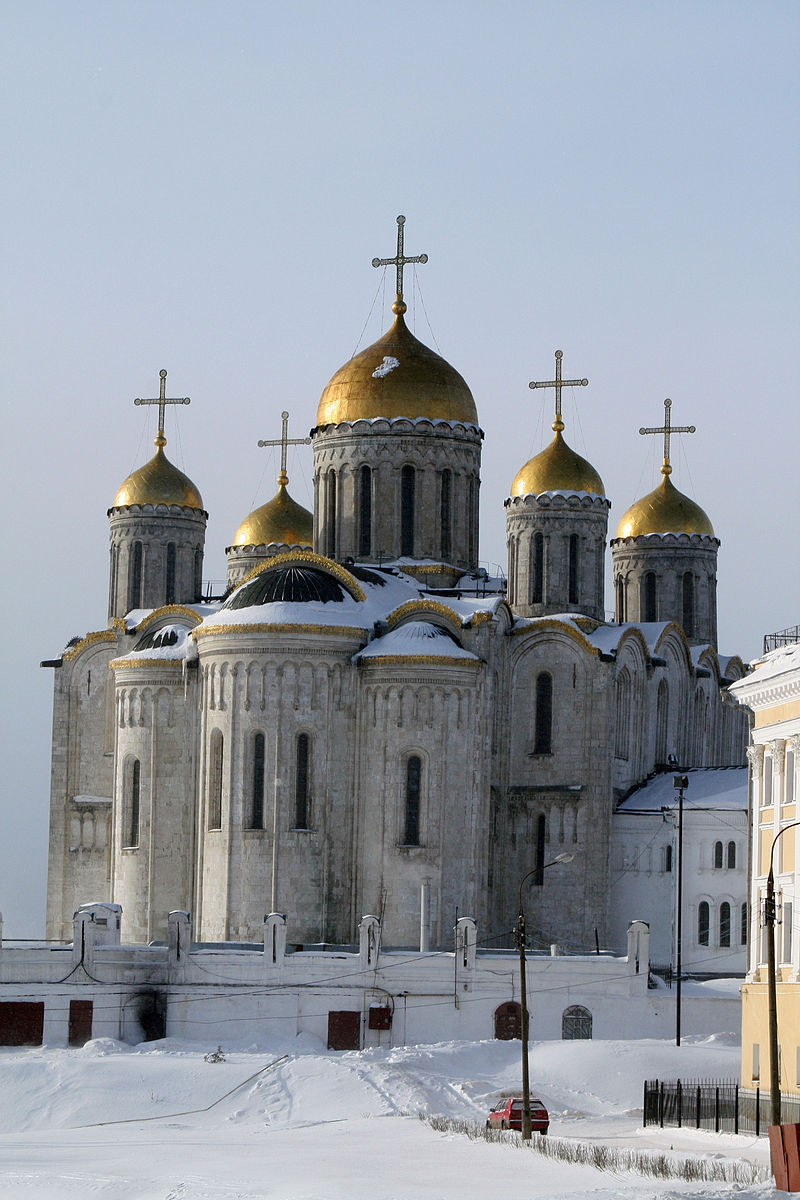
Evolving tradition: Hagia Sofia cathedral in Kiev, Ukraine, Hagia Sofia cathedral, Novgorod (both 11th c.) and Uspensky Sobor in Vladimir (12th c.)
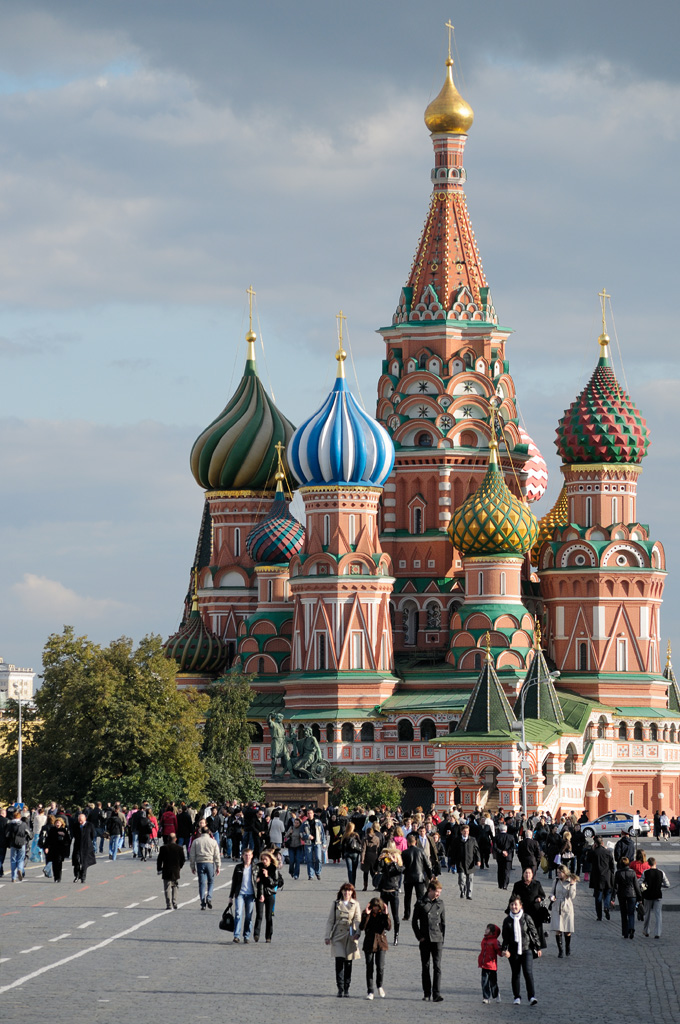

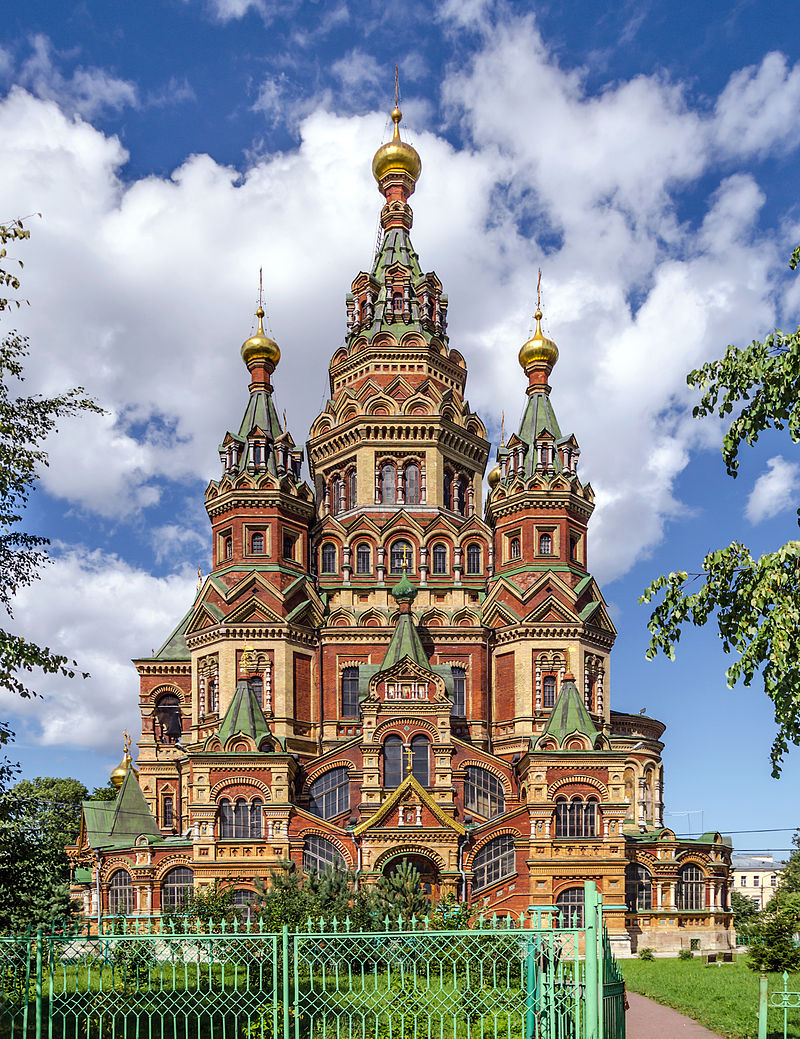
Russia makes the tradition its own: Russia's unique take on the Byzantine style, exemplified by the churches of Saint Basil in Moscow (16th c.), Transfiguration on Kizhi (17th c.) and Saints Peter and Paul in Peterhof (20th c.) Although not technically classical Byzantine style, the influence is evident.



From East to West: Neo-Byzantine churches in Greece (Saint Andreas Cathedral in Patras, 20th c.), France (Saint Mary Cathedral in Marseille, 19th c.) and Great Britain (Westminster Cathedral of the Most Precious Blood in London, 20th c.), showing the universal appeal of Byzantine architecture even in non-Orthodox contexts.
A we can see, not only do the externals of the Orthodox Church and its traditions maintain continuity with the ancient Byzantine world in which the Church grew and developed, but its entire theological and cosmological worldview is also firmly rooted in the thought of the Byzantine world. The culture of the Christian East was a 'total package' consisting of faith, art, poetry, architecture, song, and philosophy, all inspired and informed and shaped by the Orthodox faith. This culture, Byzantine culture, was a precious treasure freely distributed to those who would receive it, as did the Slavs and others who accepted the Orthodox faith. Some, such as Serbia and Bulgaria, have maintained this tradition more or less as they received it, while others, such as Russia, have developed the tradition and made it their own, by fusing their own local culture with that received from Byzantium.
In our own time, the Orthodox Church remains the sole repository of this treasury, its worldly component having faded long ago with the fall of the Empire. In Orthodox societies, and in Orthodox parishes outside of the traditional heartlands of the faith, Byzantine culture survives in the ecclesiastical arts of iconography and chanting, and most importantly, in the theology of the Church, which is the Christian East's greatest contribution to the world.
By understanding Byzantine history, we understand our own history as Orthodox Christians, a history now shared by people spread over the entire face of the earth, a history that can still be lived and experienced in the Orthodox Church.
Below we share some of the best resources for discovering more about Byzantine History and culture:
Byzantine History
A History of Byzantium - the standard textbook for the HTS Byzantine History course
A History of the Byzantine Empire: Volume I & Volume II
Nicaea: A Byzantine Capital and Its Praises
Constantine the Ethnomartyr: Last Emperor of Byzantium
Byzantium and Orthodoxy
The Byzantine Legacy in the Orthodox Church
Byzantine Liturgical Reform: A Study of Liturgical Change in the Byzantine Tradition
Byzantium and Russia
The Legacy of St. Vladimir: Byzantium, Russia, America
Byzantium and the Rise of Russia: A Study of Byzantino-Russian Relations in the Fourteenth Century
Byzantine Theology and Fathers
Byzantine Fathers and Theologians (An Encyclopedic Survey)
Crisis in Byzantium: The Filioque Controversy in the Patriarchate of Gregory II of Cyprus
The Old Testament in Byzantium
Justinian the Great: The Emperor and Saint
Byzantine Sacred Art
Byzantine Thought and Art: A Collection of Essays
Byzantine Churches of Greece and Cyprus
Byzantine Churches of Thessaloniki
Guide to Byzantine Iconography, Vol. I & Vol. II
Byzantine Philosophy
We will have a special guest post on the blog next week, with a special focus on Byzantine and Orthodox Philosophy, from the former instructor in Philosophy at Holy Trinity Seminary, Mr. Cyprian Fennema.
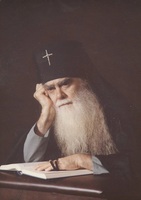
Archbishop Averky: A Short Reflection
On Wednesday, 31st March (O.S.), the feast of Saint Jonah and Saint Innocent, Metropolitans of Moscow, the church commemorated the 40th anniversary of the repose of Archbishop Averky of Syracuse, former Abbot of Holy Trinity Monastery and rector of Holy Trinity Orthodox Seminary.Among the many luminaries of the Russian Orthodox Church Outside of Russia, Vladyka [...]

Into All Nations: Modern Orthodox Mission (cont.)
In Part One, we discussed the Scriptural basis for the Church's strong tradition of missionary endeavors, beginning with Christ's own commandment to go "teach all nations" (Mt. 28:19) and continuing with the Byzantine mission to the Slavs and the Russian Church's own missionary endeavors within the expanding borders of the Russian empire. Today, we offer this [...]
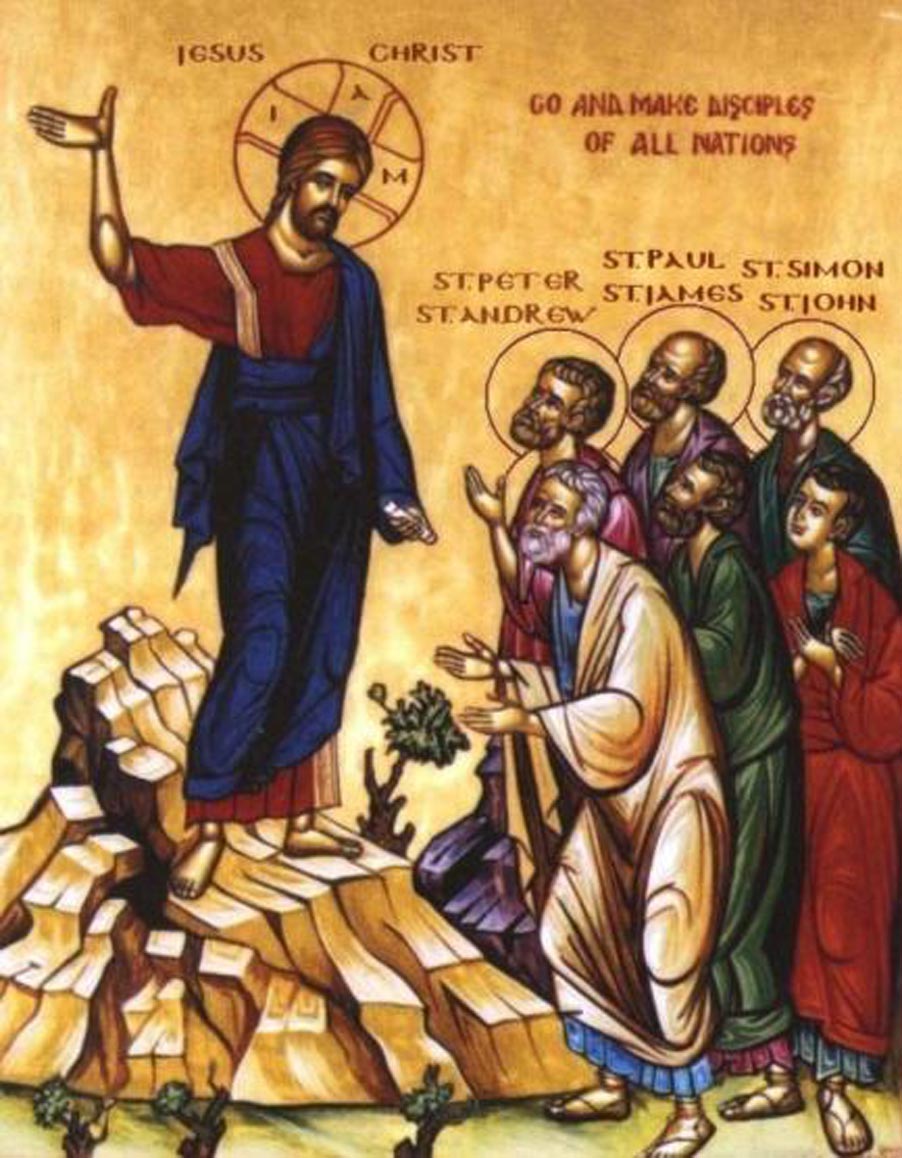
Into All Nations: Modern Orthodox Mission
Christ’s commandment to “go into the whole world and preach the gospel to every creature” (Mark 16:15) is something taken very seriously by the Orthodox Church, from the Apostolic age to the present day. For nigh on 2,000 years, the Church has been spreading the message of the Gospel to the four corners of the [...]
Archimandrite Vladimir: A Personal Remembrance
Note: Today, the feast of St. Vladimir of Kiev, is also the nameday of Archimandrite Vladimir (Sukhobok), who used to run the monastery bookstore. Fr. Vladimir reposed in 1988. The following is a personal remembrance of Fr. Vladimir by Joseph McLellan (later Archimandrite Joasaph, †2009), who graduated from Holy Trinity Seminary in 1985. It is republished [...]
Russian Orthodox Funereal Practices
“Pale death watches over us all.” —Derzhavin From time immemorial, people have been burying their dead with ceremony and prayer. The Holy Orthodox Church has a number of prayer services for the dead, beginning with the departure of the soul from the body, through the funeral service itself and afterwards. These services serve both to assuage the [...]
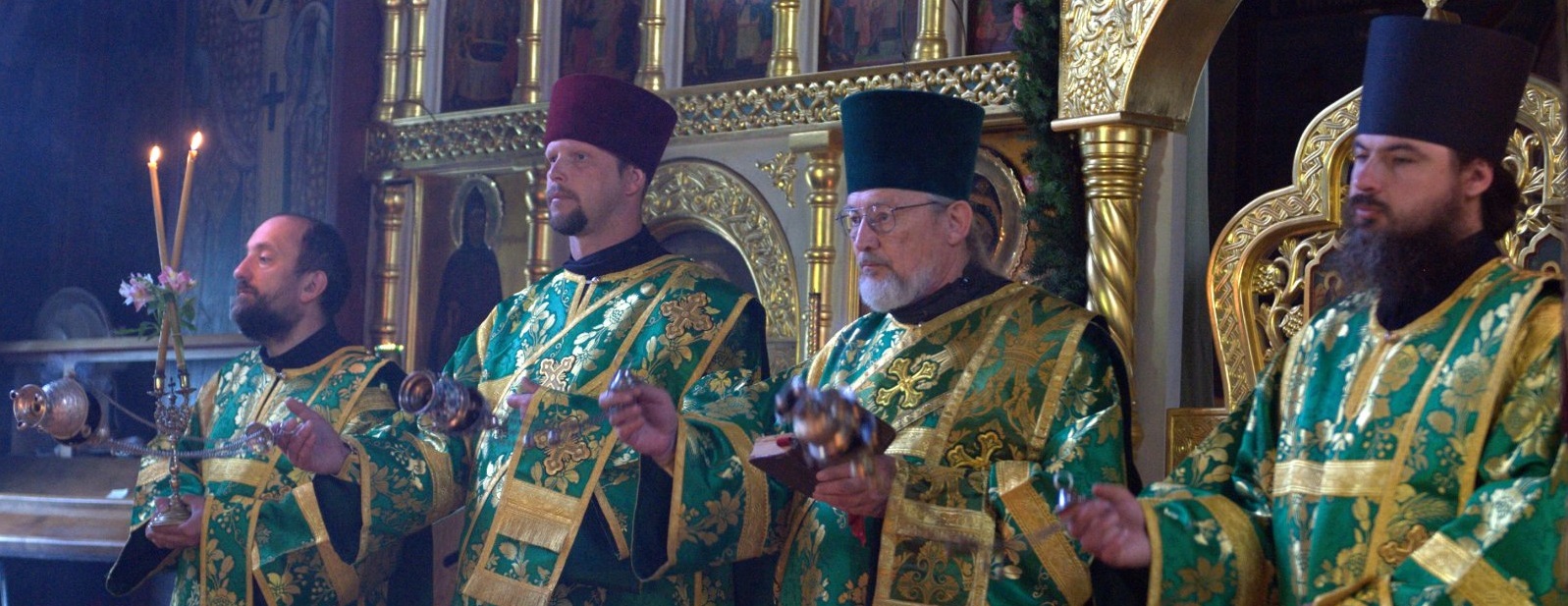
The History and Meaning of Incense
For from the rising of the sun even unto the going down of the same My name shall be great among the Gentiles; and in every place incense shall be offered unto My name, and a pure offering: for My name shall be great among the heathen, saith the Lord of hosts.” (Malachi 1:11) The liturgical services [...]
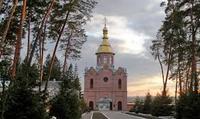
Help the beleaguered Glinsk Hermitage!
Update 4/29/2015: With your help we raised $1,159 for the Glinsk Hermitage! May the Lord bless your generosity!We recently received disturbing news from the Glinsk Hermitage, a monastery located just miles from the Russian-Ukranian border. Though sometimes overshadowed by Optina, Glinsk boasts its own lineage of God-bearing elders and ascetics. In recent years, 16 of these [...]
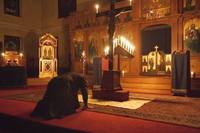
Recommendations for Lenten Reading
With Great Lent quickly approaching, we offer these new and classic titles for your consideration as you consider what spiritual reading to pick up this year.Liturgical Season of Repentance: Lenten Homilies of St John of Kronstadt (Holy Trinity Publications). For the first time a selection of St John's Lenten sermons is presented in English translation. They follow [...]
Creating a Liturgical Library
The Divine services constitute a treasury of theology and life for all Orthodox Christians. Whilst compiled and formed throughout the ages by men, they were guided by the Holy Spirit, who guides the Church into all truth (cf. John 16:13). Therefore, we do not just believe the divine services are interesting sources of theology, or men's expressions of worship – they [...]
